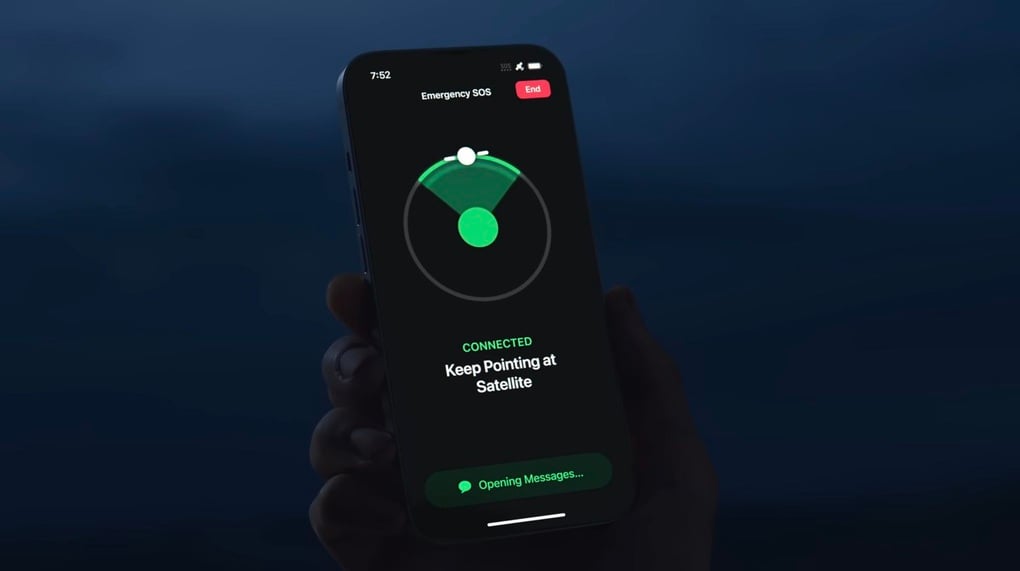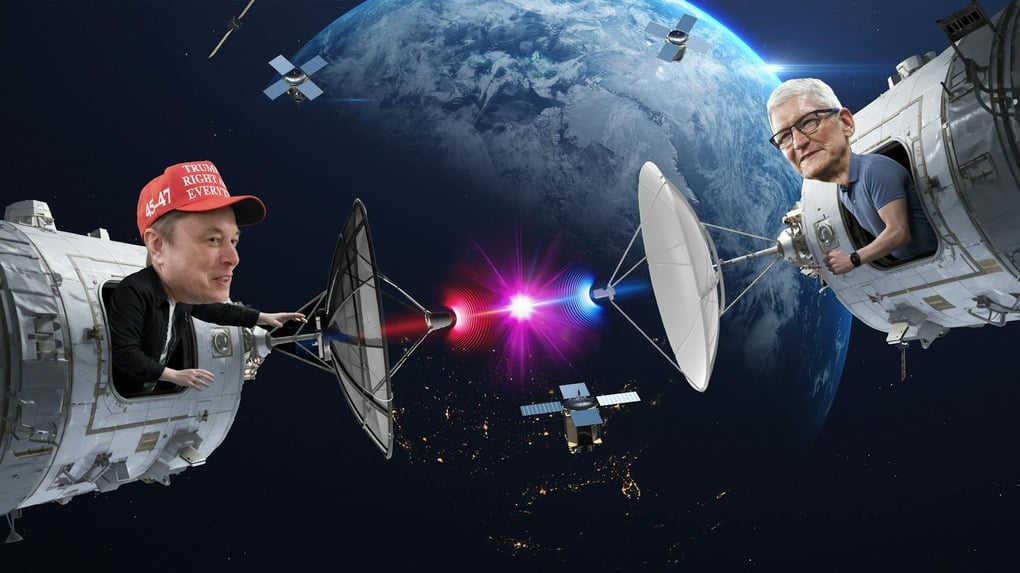The satellite emergency SOS feature is one of Apple's major efforts in its ambition to provide satellite Internet for iPhone (Photo: ST).
Apple has plans to create a global satellite internet service that could rival Starlink. A new report from The Information has lifted the veil on “Project Eagle,” an ambitious, multimillion-dollar plan that ultimately failed to materialize.
Missed appointment with the sky
The story begins in 2015, when Apple joined hands with Boeing Corporation to launch "Project Eagle".
The goal is nothing less than launching thousands of satellites into Earth orbit, forming a network that delivers high-speed wireless Internet directly to iPhones and homes.
Users only need to attach a compact antenna to the window to be able to immerse themselves in the network world created by Apple.
Apple believes that self-sourcing the Internet will bring a more seamless user experience, freeing it from dependence on mobile carriers - "necessary but inconvenient partners" that Apple believes have somewhat hindered the potential of the iPhone.
Like the silicon chip autonomy revolution, Project Eagle is expected to be a strategic move to help Apple reduce its dependence on outside companies.
The Cupertino giant (Apple) did not hesitate to spend 36 million USD to test this idea at a facility in El Segundo, California.
The service was expected to launch in 2019. However, it has yet to materialize.
Apple's ambitions are being threatened by the power of Starlink satellites (Illustration: ST).
CEO Tim Cook expressed deep concern that Project Eagle could spell the end of Apple's already fragile relationship with the telecommunications industry.
In addition, the huge cost of the project and an unclear short-term business plan are also major barriers.
In 2016, Apple decided to kill the project. Many senior staff involved in Project Eagle then left the company one by one.
Relentless efforts
Despite the failure of Project Eagle, Apple’s ambitions to conquer space did not die. Former hardware engineering director Dan Riccio then assembled a team to explore breakthrough wireless opportunities that would enable Apple devices.
In 2018, Apple returned to the negotiating table, this time with satellite Internet operators like OneWeb, with the intention of investing to deploy satellite Internet service to the home.
However, the estimated investment figure of 30 to 40 billion USD that OneWeb gave, along with similar concerns that "killed" Project Eagle, once again extinguished the ambition of this technology company.
The team then pivoted, focusing on the idea of providing satellite communications services for iPhones in remote areas where conventional cellular coverage is lacking.
The result of this effort is the satellite emergency SOS feature, launched in 2022 and well received by users.
Not stopping there, in 2023, Apple's satellite team proposed an even bolder plan: Using a new generation of satellites to provide full, unlimited Internet service to iPhones in remote areas.
The plan would require increasing the number of satellites from a few dozen to hundreds, meaning operating costs would skyrocket compared to the current service Globalstar is providing to Apple.
And once again, fear of upsetting mobile carriers caused Apple to decline.
The future is uncertain
Today, even within Apple, many employees and senior executives question the long-term viability of satellite connectivity features on the iPhone.
Engineers who worked on the project revealed that the current Globalstar network is outdated, slow and much more limited than Elon Musk's Starlink, and this situation is unlikely to improve in the next decade.
One notable detail is that Apple has yet to charge iPhone users for satellite connectivity features, and has even extended the free access period until at least September.
This reluctance is believed to stem from concerns that charging a fee could put Apple in the U.S. government’s category of telecommunications service provider, potentially forcing the company to create a surveillance “backdoor” into iMessage — a scenario Apple has always wanted to avoid.
Meanwhile, current satellite features are costing Apple hundreds of millions of dollars a year.
Several senior executives, including Chief Software Officer Craig Federighi and Chief Business Development Officer Adrian Perica, are said to have advocated for the features to be discontinued.
They argue that customers are more likely to sign up for satellite services through their mobile carrier.
Apple's satellite Internet dream, while ambitious and well-funded, is still a long way off with countless challenges.
Will the American tech giant continue to pursue it, or will this forever be an unfinished "Project Eagle" in Apple's history?
Source: https://dantri.com.vn/cong-nghe/apple-co-ke-hoach-cung-cap-dich-vu-internet-gia-dinh-giong-nhu-starlink-20250528010114768.htm







![[INFOGRAPHIC] Open-back headphones, look like a... pill](https://vphoto.vietnam.vn/thumb/1200x675/vietnam/resource/IMAGE/2025/7/16/cd63f007ad404018aa504c1009ce19ba)































































































Comment (0)